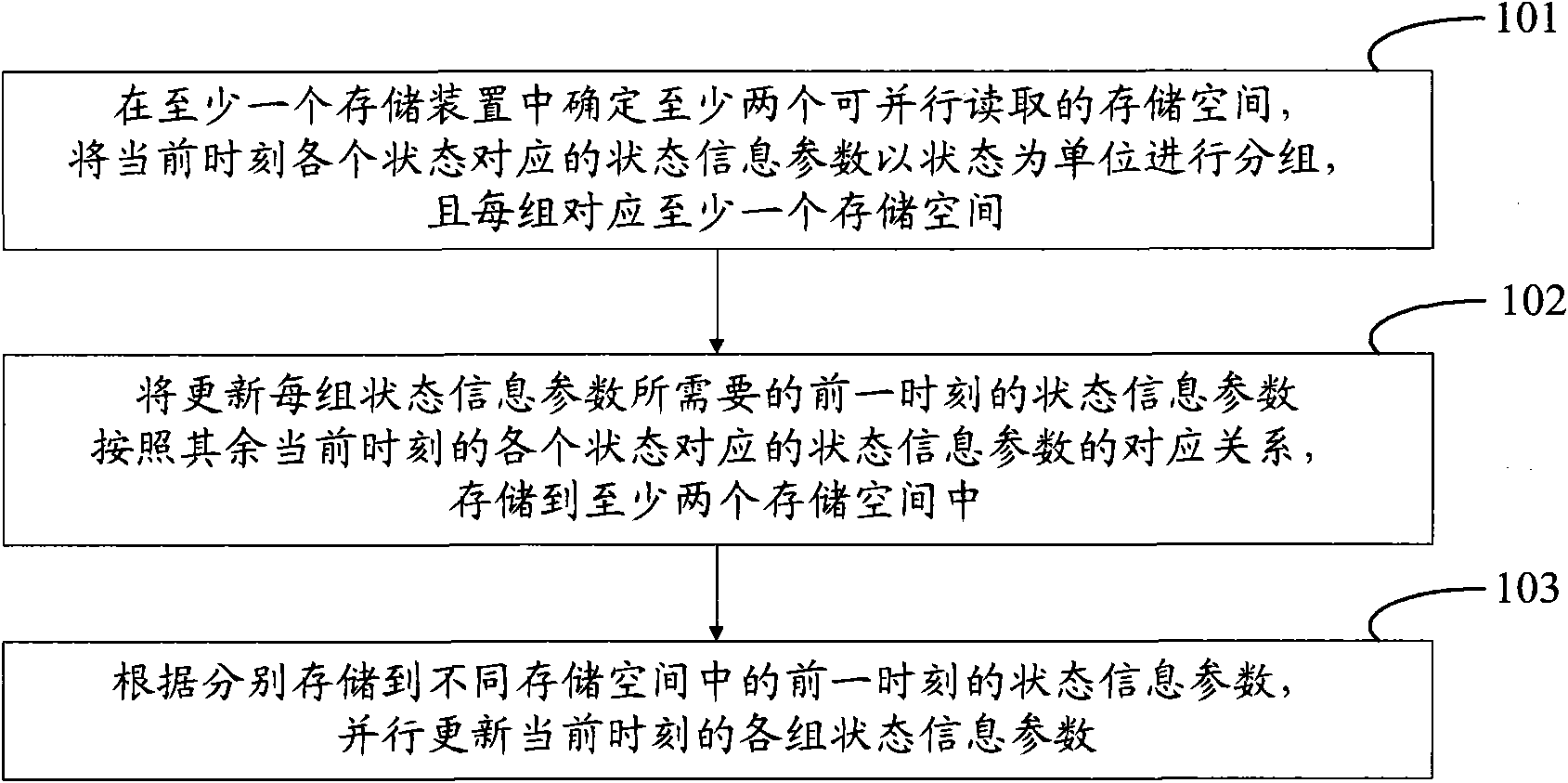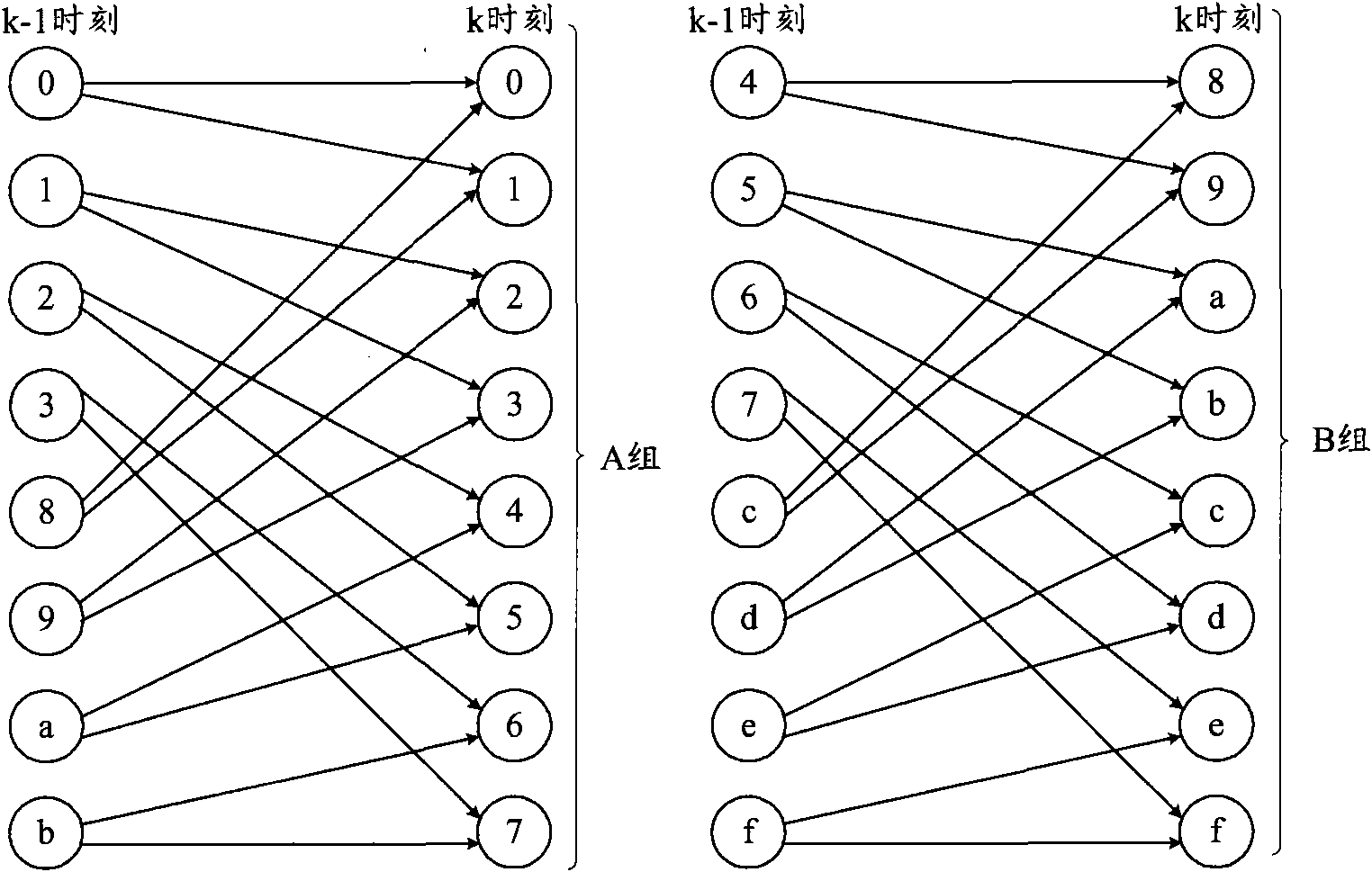Method and device for demodulating convolution code
A convolutional code and storage device technology, applied in the field of convolutional code demodulation, can solve the problem of low demodulation efficiency and achieve the effect of improving demodulation efficiency
- Summary
- Abstract
- Description
- Claims
- Application Information
AI Technical Summary
Problems solved by technology
Method used
Image
Examples
Embodiment 1
[0031] Embodiment one, see figure 1 Detailed description, figure 1 It is a schematic flow chart of the method in this embodiment.
[0032] Step 101: Determine at least two storage spaces that can be read in parallel in at least one storage device, group the state information parameters corresponding to each state at the current moment in units of states, and each group corresponds to at least one storage space.
[0033] The state information parameters include the state information parameters at the previous time (k-1 time) and the current time (k time), and the state information parameters include channel factors and survivor symbols. For example, the state information parameters of state 0 include the channel factor and survivor symbols at time k-1, and also include the channel factor and survivor symbols at time k.
[0034] In different modulation modes, the number of states is different. For example, in the Gaussian minimum frequency shift keying (GMSK, Gaussian-filtere...
Embodiment 2
[0044] Embodiment two, see figure 2 Detailed description, figure 2 It is a schematic flow chart of the method in this embodiment.
[0045] Step 201: Divide state information parameters into group A and group B by state.
[0046] The state information parameters of the 16 states at time k are divided into two groups, group A and group B respectively.
[0047] The 16 states are 0, 1, 2, 3, 4, 5, 6, 7, 8, 9, a, b, c, d, e, f; then group A is the state 0, 1, 2, 3, State information parameters corresponding to 4, 5, 6, 7, and group B are state information parameters corresponding to states 8, 9, a, b, c, d, e, f. Each state corresponds to different state information parameters, that is, group A is the channel factor and surviving symbols corresponding to states 0, 1, 2, 3, 4, 5, 6, and 7, and group B is state 8, 9, a, Channel factors and survivor symbols corresponding to b, c, d, e, f.
[0048]The principle of grouping is that the state information parameters of group A and ...
Embodiment 3
[0071] Step 301: Group the state information parameters into state units.
[0072] Divide the state information parameters of the eight states at time k into two groups, group A and group B respectively.
[0073] The 8 states are 0, 1, 2, 3, 4, 5, 6, and 7 respectively; group A is the state information parameters corresponding to states 0, 1, 2, and 3 at time k, and group B is the state at time k State information parameters corresponding to 4, 5, 6, and 7.
[0074] The principle of grouping is that the state information parameters of group A and group B can be updated in parallel without causing read-write conflicts in the storage space.
[0075] Step 302: According to the state transition relationship, confirm the state corresponding to the state information parameters at the previous moment required to update Group A and Group B.
[0076] The state transition relationship from the previous moment to the current moment is as follows: Figure 7 as shown, Figure 7 It is a...
PUM
 Login to View More
Login to View More Abstract
Description
Claims
Application Information
 Login to View More
Login to View More - R&D
- Intellectual Property
- Life Sciences
- Materials
- Tech Scout
- Unparalleled Data Quality
- Higher Quality Content
- 60% Fewer Hallucinations
Browse by: Latest US Patents, China's latest patents, Technical Efficacy Thesaurus, Application Domain, Technology Topic, Popular Technical Reports.
© 2025 PatSnap. All rights reserved.Legal|Privacy policy|Modern Slavery Act Transparency Statement|Sitemap|About US| Contact US: help@patsnap.com



